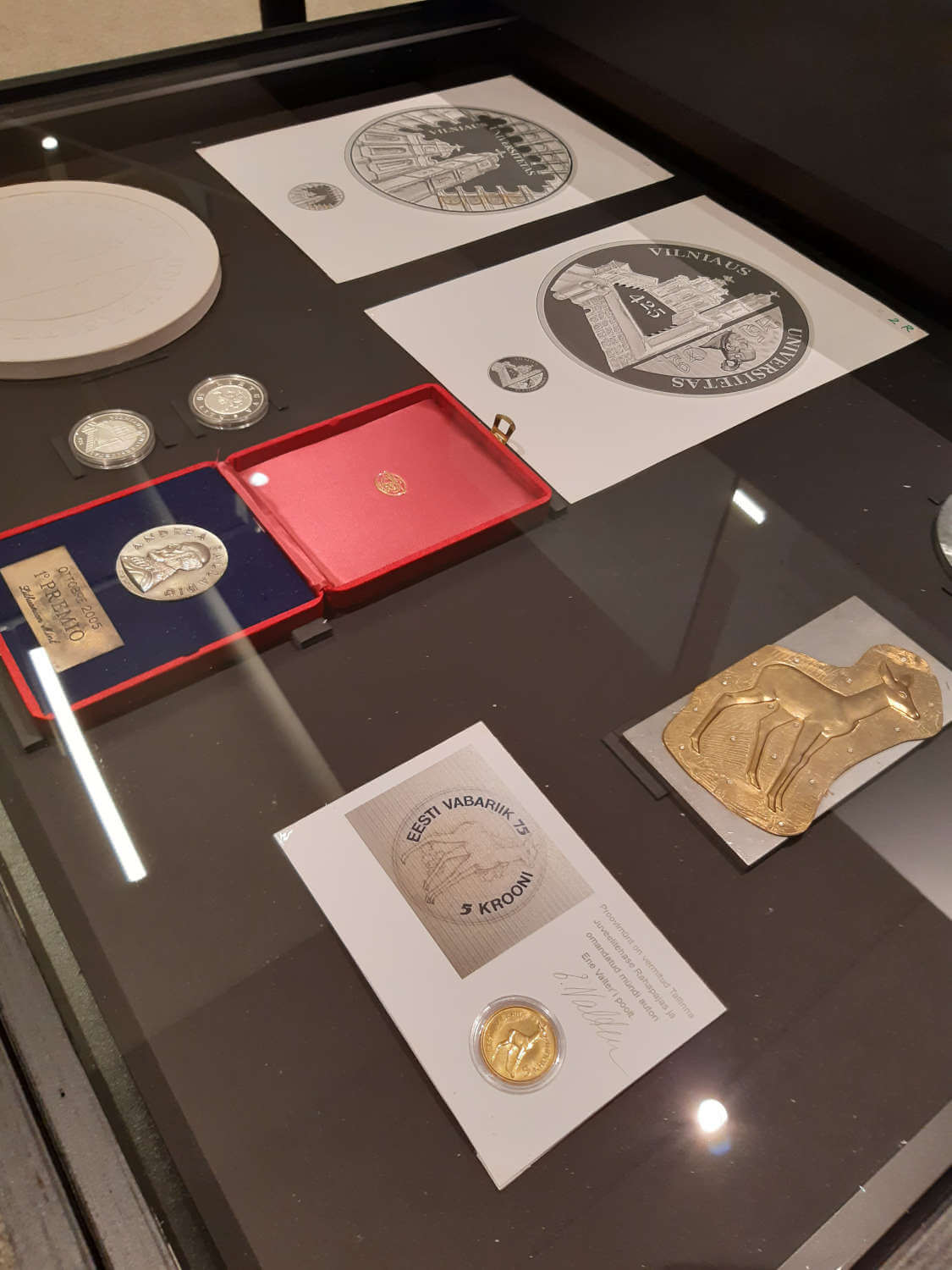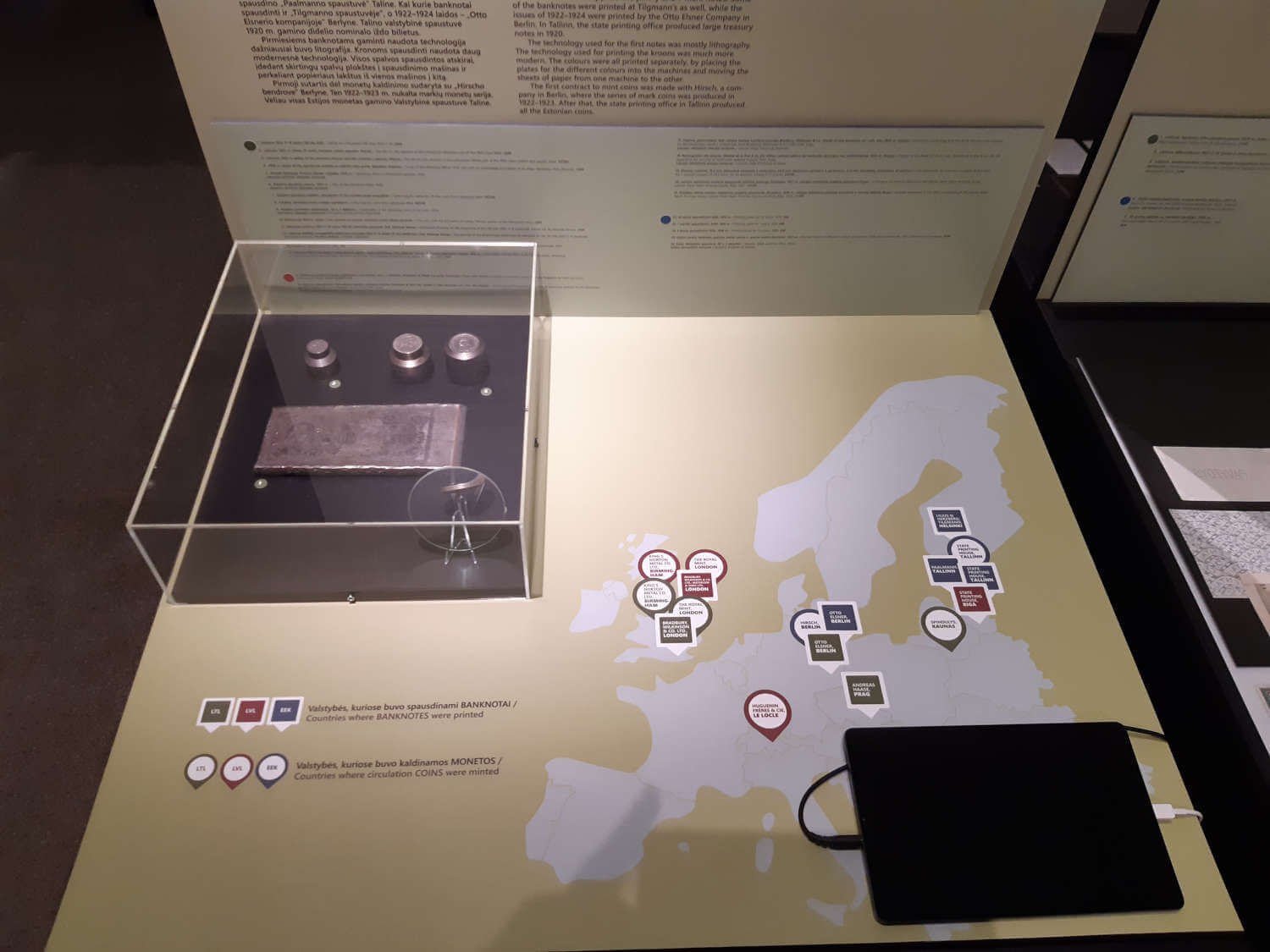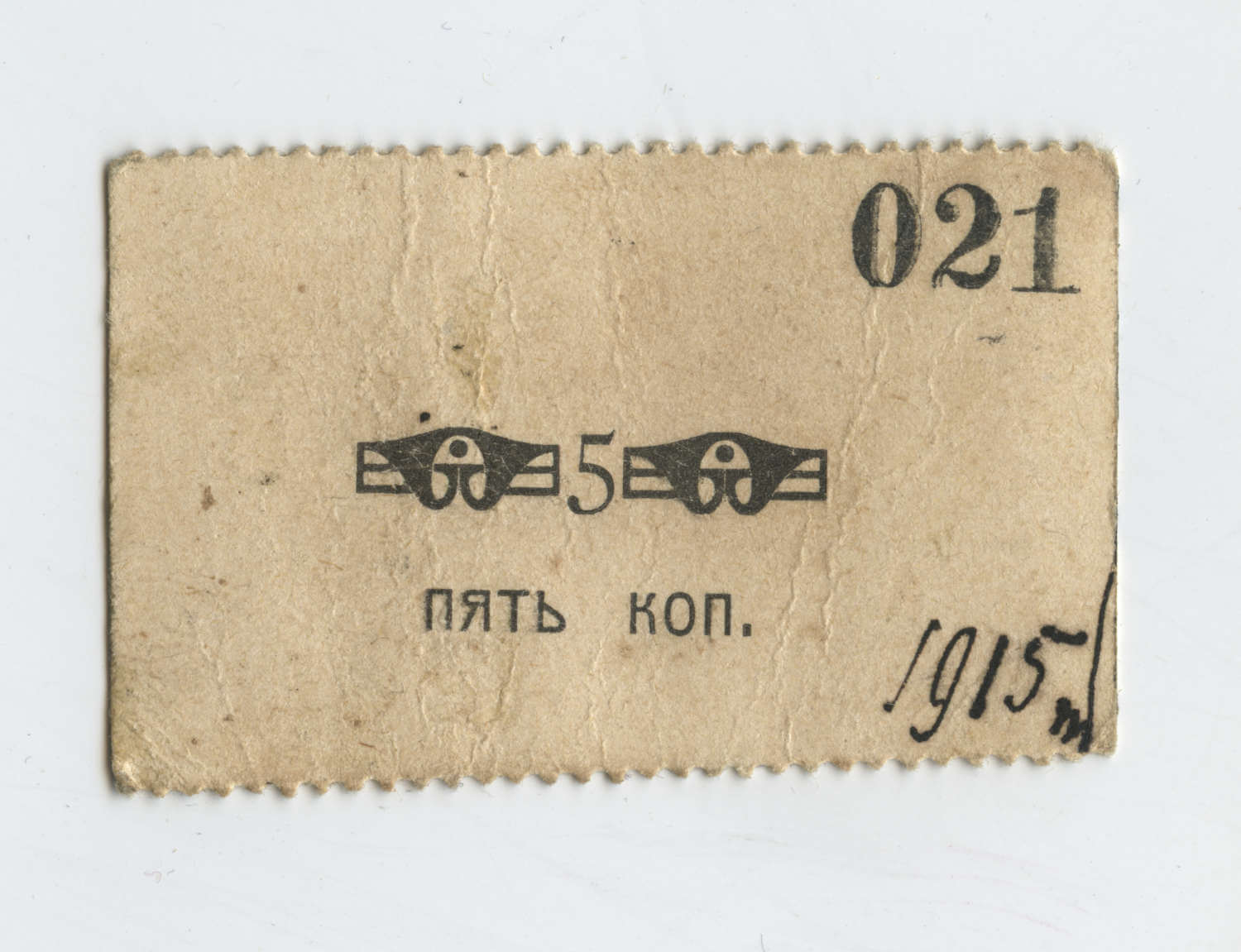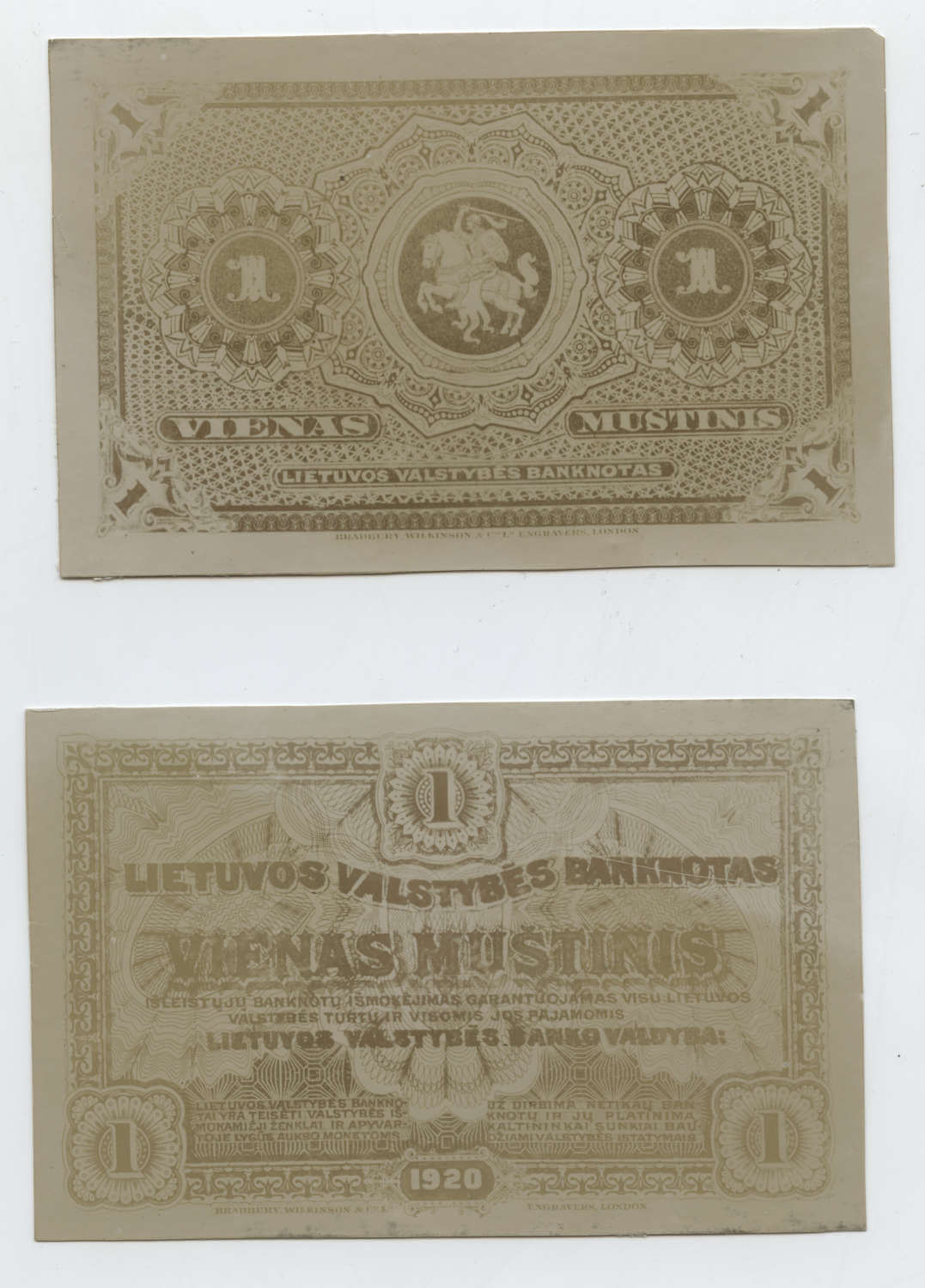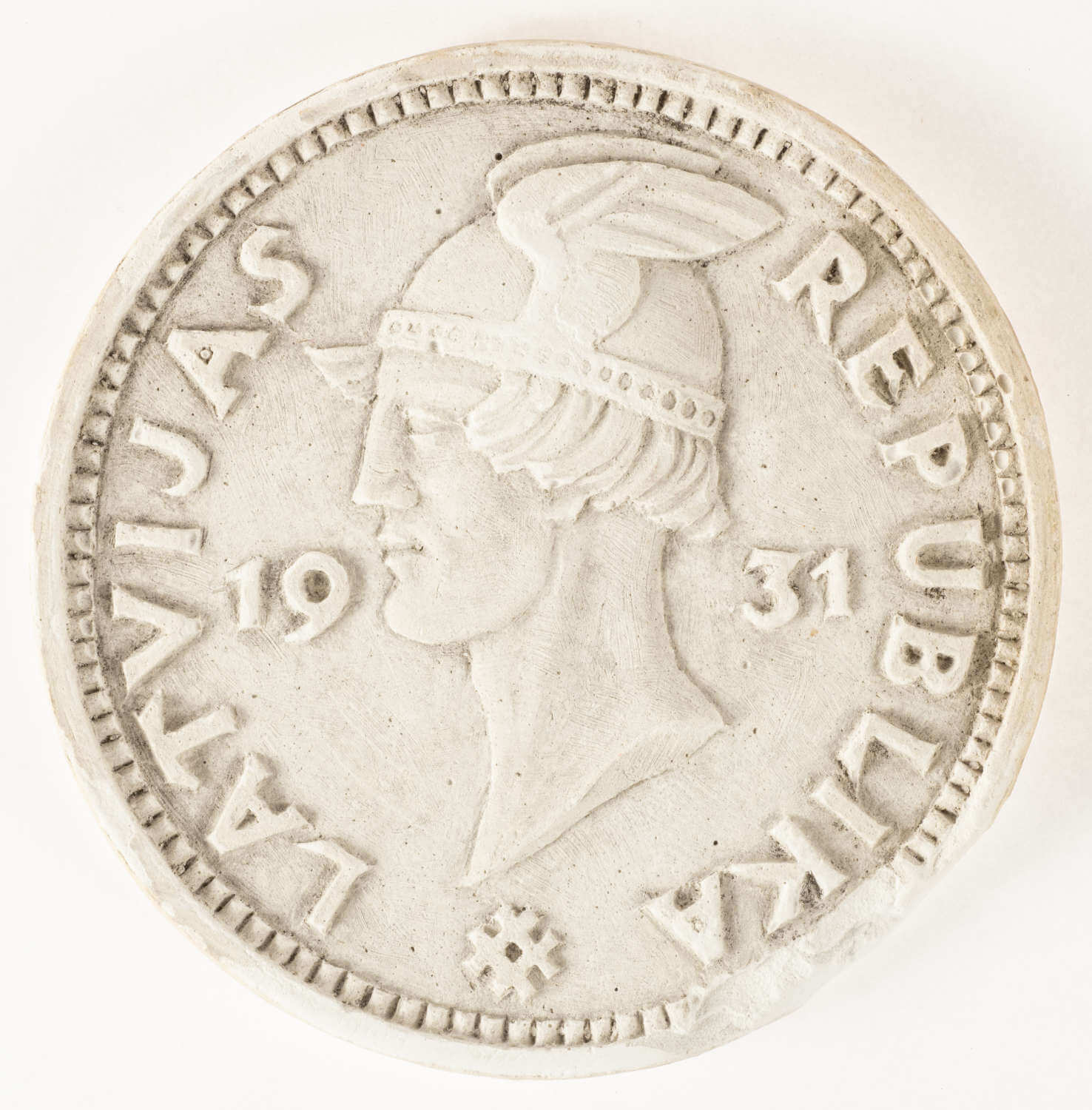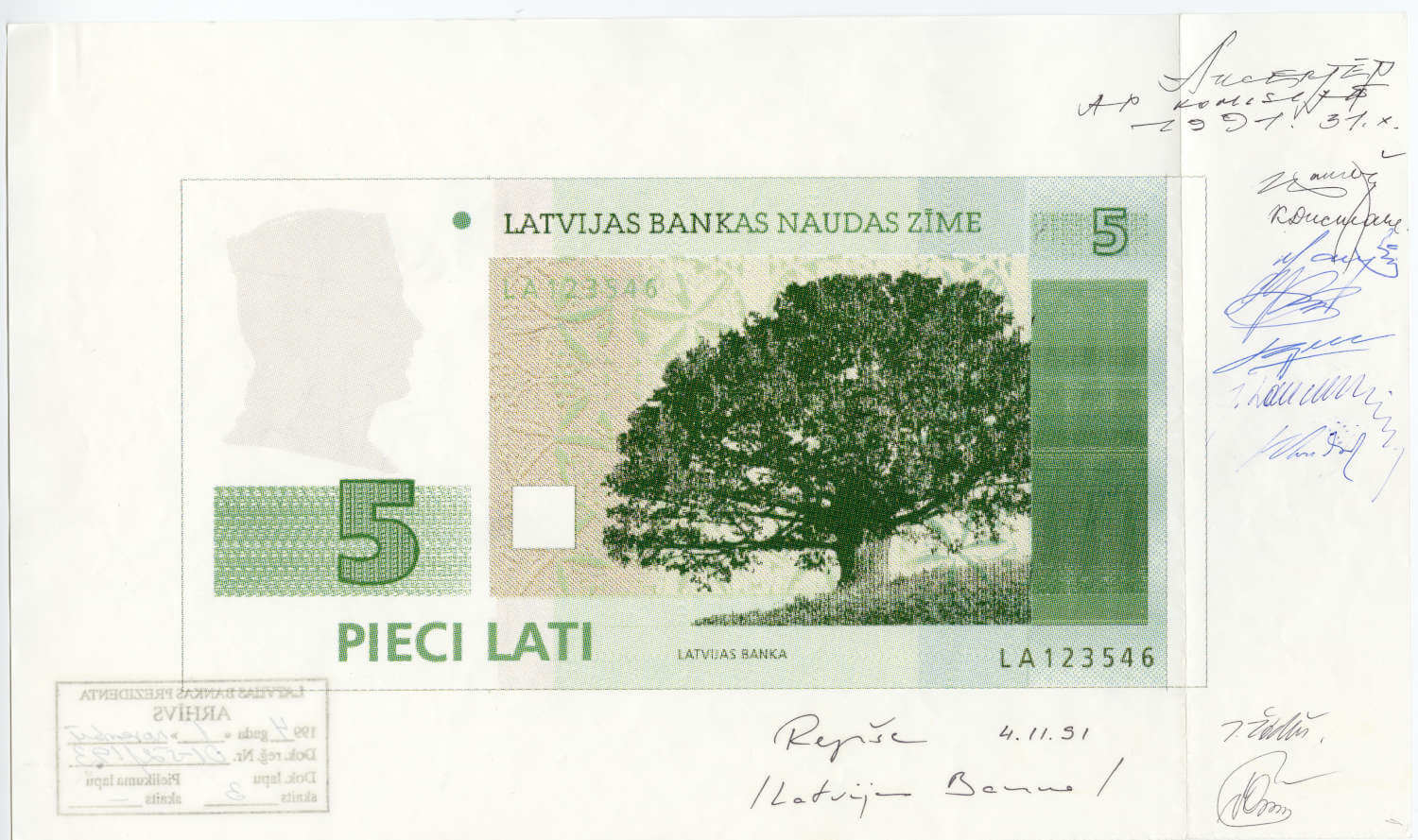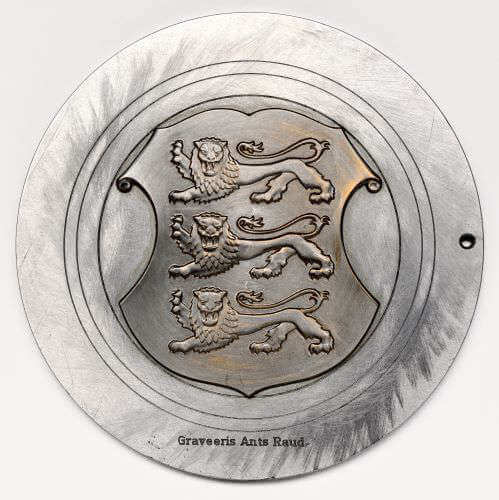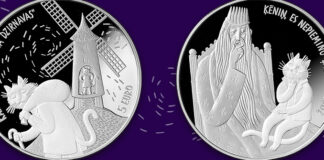
The first numismatic exhibition side by side displaying currencies of the three Baltic States was held over 30 years ago, when celebrating their national revival, the Baltic States welcomed the return of the signs and symbols of their statehood. The subject matter of the exhibition “Money in Estonia, Latvia and Lithuania, 1915−1940, held in Vilnius, Tallinn and Riga was the history of the national currencies, the kroon, the lats and the litas. Over 30 years, the history of the three Baltic States and their monetary systems has been punctuated by milestones: restoration of the statehood and the respective national currencies, adoption of the euro, accession to the European Union and the NATO, and, in 2018, Lithuania, Latvia, and Estonia celebrated their centenaries.
In 2022, Lithuania’s national currency, the litas, celebrates its 100th anniversary hosting the exhibition “100 Years: Litas, Lats, Kroon” jointly organized with Latvian and Estonian museums preparing to mark the centenaries of their currencies this year. The exhibition is a journey through the three Baltic States and two historical periods where they share a similar political, financial and ideological history. It is on view at the National Museum of Lithuania, New Arsenal, until 5th February 2023.
The creation and restoration of national currencies are similar in each period, triggering similar questions in order to understand them: what was prior to the introduction of our own currencies?, how was the national currency created?, where and how money was produced?, how did we − as individual countries − seek to present ourselves and are represented through our money?, were there any alternatives, i.e. could the names of our money and the tokens themselves have been any different? And the last question, tinged with sentiment: is this the end or can we expect a continuation? And the answer to those questions discloses the multifaceted − historical, political, economic, cultural, ideological, artistic − significance of national currencies. At the same time, it is an opportunity to learn more about the money of the three countries, to compare the context of their origin and existence, to read the history of the three nations encoded within, look at own history or that of the neighbors from a different perspective, highlight their commonalities and realize the differences.
For the first time the exhibition shows the photo-projects of patterns of the first money of the Republic of Lithuania, muštiniai, of 1920, unpublished sketches of money designed in 1919–1920 by the architect Vladimiras Dubeneckis (1888−1932), money notes of Telšiai and Plungė 1915 – inserted in the WWI-era diary of the Telšiai burgomaster Feliksas Milevičius (1883−1965), a book carrier, and the sketches by the artist Adomas Varnas (1879−1979) for designs of litas banknotes of 1922, as well as valuable exhibits related to the production of modern money from the Money Museum of the Bank of Lithuania.
Estonian and Latvian counterpart museums delivered more than 700 exhibits and digital images. The Latvian collection included plaster models of a 3 lats coin designed, though never produced, by the artist Vilhelms Krūmiņs (1891−1959); and the models of one of the most aesthetic coins − the gold 20 lats coin created in 1922 by the sculptor Teodors Zaļkalns (1876−1972), which waited 86 years to be issued. The exhibition includes designs of the 5 lats banknote approved for production in 1991, which have never been published or shown and are stored in the archives of the Bank of Latvia. The Bank of Estonia Museum exhibits include a rare Estonian 1,000 pounds bond issued in 1927 to provide a 7% interest loan to support banking and monetary reform, Estonian kroon specimens from the inter-war period, money-making equipment and models, and for the first time, a metal model with three lions, and the Estonian coat of arms.
The projects, models, sketches and unrealized works of the Baltic artists who created the national currency of both periods are presented in digital images, with the hope of eventually seeing the originals within the framework of a separate specialized exhibition.
The digital images for the exhibition were lent or made available by the Money Museum of the Bank of Lithuania, the M. K. Čiurlionis National Museum of Art, the Lithuanian National Museum of Art, the Bank of Latvia, the Samogitian Museum Alka, the Kėdainiai Regional Museum, the Art Museum of Estonia, the Martynas Mažvydas National Library of Lithuania, the Lithuanian Central State Archives, the National Archives of Estonia, Information Centre of the Latvian Academy of Arts and personally Ugnius Urba, Vytautas Aleksiejūnas, Algimantas Lekevičius, Gitana Matonytė-Vaskelienė, Edmundas Čijauskas, Algimantas Petraitis (Lithuania), Vladimir Taiger (Estionia).
The exhibition will be open at the National Museum of Lithuania in Vilnius until 5th February 2023, at the National History Museum of Latvia in Riga: 3rd March−28th May 2023, and at the Estonian History Museum in Tallinn: 15th June−12th October 2023.
Visit the website of the National Museum of Lithuania in Vilnius.
In 2016 the National Museum of Lithuania issued a monograph dedicated to the monetary history and collecting of coins in Lithuania.
Here you can view the last litas collector coin before Lithuania adopted the euro.



